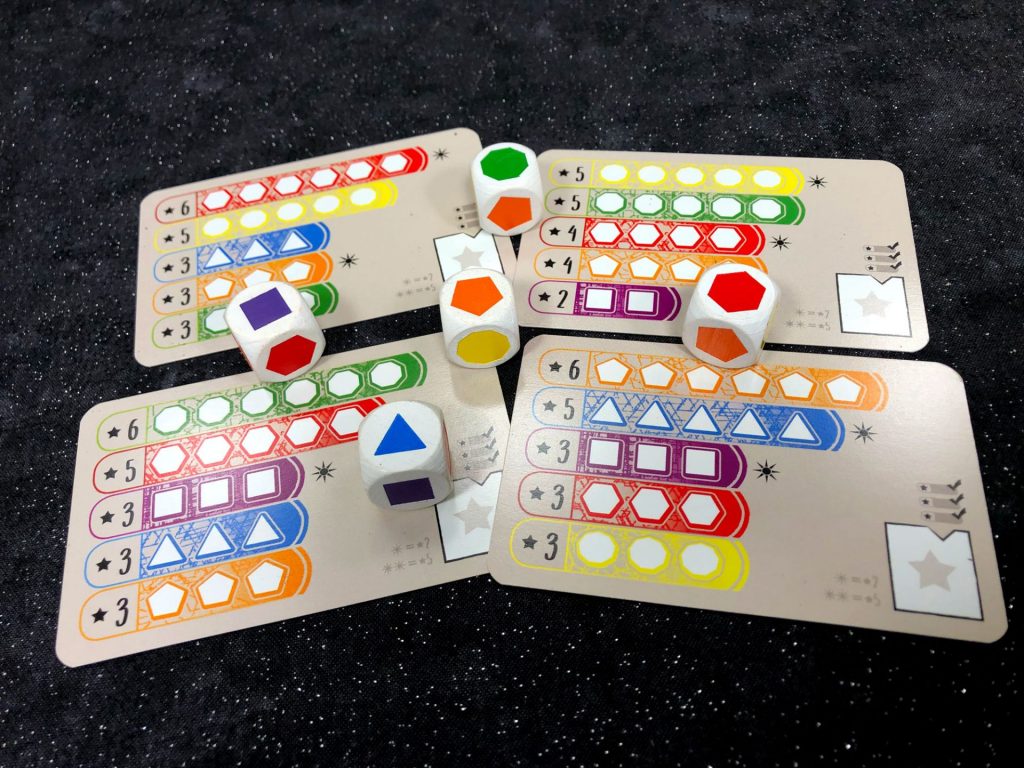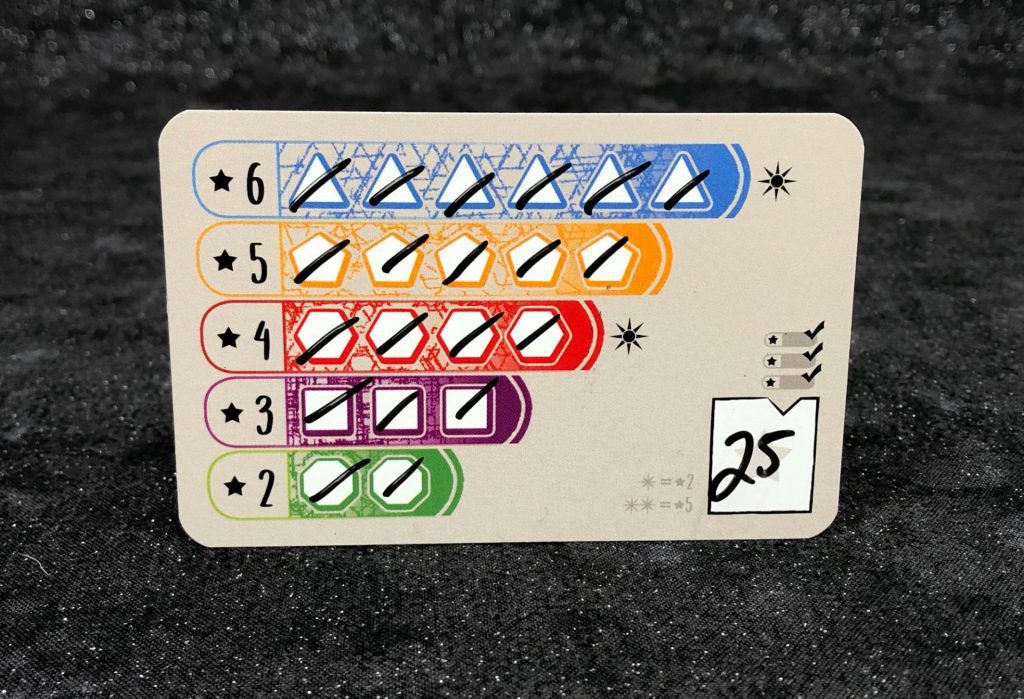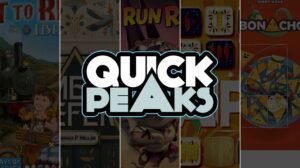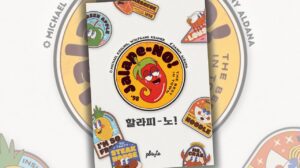By now you should know about my love of the roll and write genre (which also includes the “flip and fill” style game). It’s one of my favorite types of games because the randomness of the dice can help put inexperienced players on equal footing with more experienced players. But within the constellation of roll and write you can find games for all sorts of people: from light and easy (Ripple Rush, Silver & Gold), to moderate (Welcome To…, Cartographers), to the heavy (Rome & Roll, Fleet: The Dice Game, Three Sisters).
The game we’re talking about today, Alles Auf 1 Karte (Everything on 1 Card) lands squarely in the lighter end of the spectrum. So far this game has only been released in Germany, but I imagine it would do well in the US. I picked it up in an order from Amazon.de along with a few other titles. Spoiler alert: Everything on 1 Card has been the standout hit of the bunch.

Let’s jump into the review and find out why.
I’ll be using the English name for the remainder of the review.
You write on the cards (Du schreibst auf die Karten)
In Everything on 1 Card players are trying to earn the most points by rolling dice and marking the results with a dry erase marker directly onto specially coated playing cards dealt to them at the beginning of the game. The active player controls the roll, while the other players simply get what they’re dealt.
Each of the 5 dice are identical, and feature a mix of 6 different shapes and colors. Each card contains 5 rows with a different number of shapes, with each row displaying 1 of the 6 different color/shape combinations.
That’s a lot of numbers, so let’s take a quick look at the dice and cards to help you visualize.

You roll the dice (Du würfelst)
On your turn you roll all 5 dice, rerolling any number of dice up to 2 times. Once you’ve stopped every player will pick 1 of the 2 cards in front of them and mark the dice you’ve picked. If you don’t have that color on your card then you do nothing. If you can’t mark the complete set of shapes onto your card you do nothing. Otherwise you mark the complete set of shapes for every color represented in the dice pool, then play passes to the next player.
Once you’ve completed at least 3 rows on a card you may set that card aside to be scored. Write the value of that card in the box at the bottom right corner, then draw another card from the top of the deck. The value of a card is equal to the sum of the numbers to the left of all completed rows.

While you can turn cards in “early”, it’s a good idea to attempt to complete the entire card. Not only will you get more points for the rows, but completing one or both of the rows with a star to the right will earn you a bonus 2 or 5 points respectively.

Once any player has completed their 4th card, players will complete the current round and end the game. Add up the points on all completed cards, then add in the number of filled in spaces on incomplete cards. The player with the most points wins.
You have a lot of fun (Du hast viel Spaß)
Let’s just say this up front: Everything on 1 Card is a really light game. You can teach it in just a minute or two, the decision space is extremely limited, and the game plays in 15-20 minutes or so. But that’s part of what makes it a blast to play. You roll some dice, you try to match up the shapes you have left on your cards, that’s really it. And I love that you can mark directly onto the cards using dry erase markers, just like with Silver & Gold.
If you’re the sort of person that needs to apply strategy to everything then here’s a few things you might look for. Do your best to complete every row on every card. At the end of the game those extra 5 bonus points could make a big difference. Be careful on your rolls not to “bust” – wind up with dice you can’t use because you have too many of a shape. And pay attention to other player’s cards – if you’ve got the choice between 2 sets that benefit you, but one of them doesn’t help your opponent, make sure to choose that one.
I’ve taught Everything on 1 Card to a dozen people so far and everyone has loved it. It occupies that same space as Uno, where you can play the game and shoot the breeze at the same time. This is one of those games where spending time with your friends and family is the goal, not the game itself. And sometimes that’s exactly what you need: you’ve had a long day at work and you just want to play a game and catch up with your friends, or in between games while you’re waiting for other people to finish what they’re playing.
If you’re looking for a great light game, Everything on 1 Card delivers the fun, and won’t break the bank either.











Add Comment